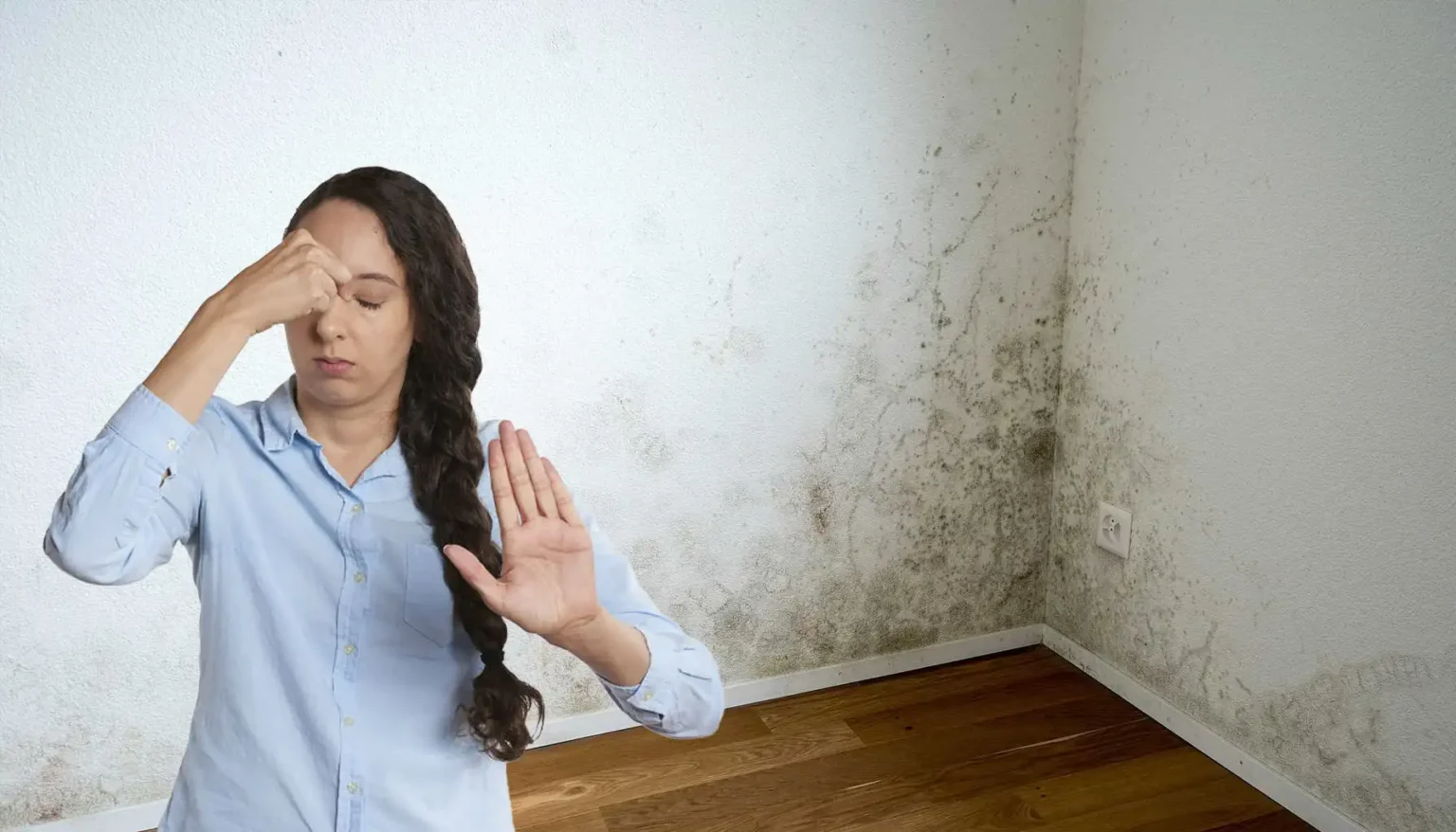Mold toxicity is a stealthy yet potentially dangerous health threat that can creep into your life unnoticed, only revealing its true impact when symptoms become difficult to ignore. Mold, a type of fungus, flourishes in damp, humid, and poorly ventilated environments, such as basements, bathrooms, and kitchens. While mold itself may seem harmless, it produces microscopic toxins called mycotoxins. These invisible culprits are easily inhaled or absorbed through the skin, leading to a range of physical and mental health complications.
The effects of mold toxicity can be far-reaching, impacting critical systems in your body. It can irritate the respiratory tract, causing persistent coughing and shortness of breath. It can also affect the skin, triggering rashes and inflammation, or cloud your mental clarity, leading to brain fog, memory issues, and fatigue. Over time, these symptoms can significantly compromise your overall well-being and quality of life.
Because mold exposure often occurs gradually, it’s vital to recognize the early warning signs before the damage becomes severe. If you suspect that mold may be present in your home, workplace, or other environments, understanding the symptoms of mold toxicity is the first step to safeguarding your health.
In this guide, we’ll uncover the 10 Warning Signs of mold toxicity and offer practical strategies to help you identify, address, and prevent mold-related health issues. By staying informed and proactive, you can create a safer, healthier living space for yourself and your loved ones.

1. Chronic Fatigue and Persistent Weakness
One of the earliest and most common indicators of mold toxicity is a relentless sense of fatigue and weakness. Even after a full night of rest, you may wake up feeling drained and struggle to find the energy to complete basic tasks. This exhaustion isn’t the result of a busy schedule or lack of sleep—it’s due to mycotoxins interfering with your body’s ability to produce energy. These toxins compromise mitochondrial function, the energy powerhouses of your cells, resulting in constant physical and mental depletion. If you notice this persistent fatigue with no clear cause, mold exposure may be to blame.
2. Persistent Headaches and Migraines
Frequent headaches or intense migraines that seem resistant to typical treatments can be a red flag for mold toxicity. When mold spores and mycotoxins are inhaled, they can inflame the sinuses, nasal passages, and brain tissues, triggering chronic head pain. The inflammation and pressure caused by these toxins can make headaches more intense and long-lasting, sometimes escalating into debilitating migraines. If your headaches worsen indoors or in damp environments, it may be time to investigate for mold contamination.
3. Respiratory Problems and Breathing Difficulties
Mold spores are notorious for affecting the respiratory system, leading to a range of breathing issues. These symptoms can include persistent coughing, wheezing, nasal congestion, chest tightness, and shortness of breath. For individuals with asthma, allergies, or pre-existing lung conditions, mold exposure can intensify symptoms and lead to frequent flare-ups. In severe cases, long-term mold exposure may result in chronic respiratory illnesses like bronchitis or fungal infections. If your breathing problems improve when you leave certain environments, mold may be the underlying cause.
4. Brain Fog and Cognitive Dysfunction
Mold toxicity doesn’t just affect your physical health—it also impacts your mental clarity. Mycotoxins can disrupt the nervous system and brain function, leading to cognitive impairments such as brain fog, memory loss, poor concentration, and confusion. You may find yourself struggling to recall information, organize thoughts, or perform simple tasks that were once easy. This mental fog can make daily life frustrating and hinder productivity. If your cognitive function seems to decline inexplicably, mold exposure could be affecting your brain.
5. Skin Rashes, Irritation, and Itching
Your skin can also serve as a warning sign of mold toxicity. Prolonged exposure to mold spores or contaminated air can cause red, itchy rashes, hives, eczema-like patches, and inflamed skin. These reactions occur when mold toxins irritate the skin’s surface or penetrate through microscopic openings. Unlike typical skin conditions, these rashes may not respond to standard treatments or creams. The irritation may worsen in damp environments or after contact with moldy surfaces, signaling the need to address mold exposure.
6. Joint and Muscle Pain
Mold toxicity can cause unexplained and persistent pain in your joints and muscles. Mycotoxins trigger an inflammatory response throughout your body, which can result in stiffness, aching joints, and sore muscles. These symptoms often mimic those of chronic conditions like fibromyalgia or arthritis. The pain may fluctuate or worsen after spending time in damp, mold-prone areas. If your muscle and joint discomfort doesn’t have an identifiable cause, mold exposure may be a contributing factor.
7. Digestive Distress and Gastrointestinal Issues
Your digestive system can also be affected by mold toxicity. Mycotoxins can disrupt the delicate balance of your gut microbiome, leading to symptoms like nausea, bloating, gas, diarrhea, and abdominal pain. These digestive issues occur because mycotoxins promote inflammation in the gut lining, impairing nutrient absorption and digestion. If you experience chronic digestive discomfort without dietary changes or infections, mold exposure may be the hidden culprit.
8. Mood Swings and Mental Health Challenges
Mold toxicity can take a significant toll on your emotional well-being. Mycotoxins can interfere with your brain’s neurotransmitters, resulting in mood swings, anxiety, depression, irritability, and emotional instability. You may find yourself feeling unusually down, anxious, or on edge for no apparent reason. These mood changes can disrupt your daily life and relationships, making it difficult to manage stress. If your mental health symptoms improve when you leave certain environments, mold could be contributing to your emotional distress.
9. Eye Irritation and Visual Sensitivity
Your eyes are highly sensitive to mold spores in the air. Prolonged exposure can lead to redness, itching, watery eyes, and a gritty sensation. You may also experience increased sensitivity to light, blurred vision, and discomfort that doesn’t improve with eye drops. Mold-related eye irritation often worsens in mold-infested spaces and can be a clear sign that mold spores are present in your environment.
10. Heightened Sensitivity to Smells, Light, and Sounds
Mold toxicity can make you unusually sensitive to strong odors, bright lights, and even everyday sounds. Mycotoxins affect the nervous system, causing it to become overreactive. You may find that perfumes, cleaning products, or chemical smells trigger headaches or nausea. Similarly, bright lights might feel overwhelming, or loud noises could become intolerable. This heightened sensitivity is a subtle but significant sign that your body is struggling with mold exposure.
Causes of Mold Toxicity
Mold toxicity often stems from environmental conditions that allow mold to flourish and spread unchecked. Mold spores are naturally present in the air, but when they find the right conditions, they can grow rapidly, producing harmful mycotoxins that impact your health. Understanding the primary causes of mold growth can help you prevent mold toxicity before it becomes a serious issue.
1. Damp and Humid Environments
Mold thrives in areas with excessive moisture and high humidity levels. Spaces like bathrooms, basements, attics, and kitchens are particularly vulnerable due to frequent water use and exposure to steam. Showers, bathtubs, and sinks that aren’t properly dried after use create an ideal breeding ground for mold spores. Additionally, areas with poor drainage or lingering condensation on windows, walls, or ceilings can contribute to persistent mold problems.
Prevention Tip: Use dehumidifiers in high-humidity areas, regularly wipe down wet surfaces, and ensure proper ventilation to keep these spaces dry.
2. Water Damage
Unresolved leaks, floods, or plumbing issues can create hidden pockets of moisture where mold can thrive. Water damage in walls, floors, ceilings, and carpets often goes unnoticed until mold has already taken hold. Even small leaks from pipes, appliances, or roofs can lead to significant mold growth if left untreated. Mold loves organic materials like wood, drywall, and insulation, which provide a food source in damp conditions.
Prevention Tip: Inspect your home regularly for leaks or water damage, especially after storms or plumbing issues. Fix leaks promptly and ensure any water-damaged materials are dried or replaced quickly.
3. Poor Ventilation
Inadequate airflow is one of the most common contributors to mold growth. Poorly ventilated spaces like closets, attics, basements, and laundry rooms trap moisture and create a stagnant environment where mold can easily spread. Without proper ventilation, steam and humidity from activities like showering, cooking, or drying clothes can accumulate, allowing mold to colonize walls, ceilings, and hidden corners.
Prevention Tip: Ensure adequate airflow by using exhaust fans in bathrooms and kitchens, opening windows when possible, and installing vents in enclosed areas. Regularly check air ducts and HVAC systems to ensure they are clean and functioning properly.
How to Detect Mold in Your Environment

Detecting mold early is essential for preventing health issues and minimizing damage to your home. Mold often grows silently and out of sight, so it’s important to know the key signs that indicate its presence. Here’s a detailed guide to help you identify mold in your environment before it becomes a serious problem.
1. Conduct a Thorough Visual Inspection
One of the most straightforward ways to detect mold is through a careful visual inspection of your home or workspace. Mold can grow on various surfaces, including walls, ceilings, floors, windowsills, tiles, and even furniture. It often appears as:
- Black Patches: These are commonly associated with toxic black mold (Stachybotrys chartarum) and can be found in damp areas like bathrooms and basements.
- Green Spots: Typically found on walls, carpets, or insulation, green mold (Aspergillus) thrives in moist, humid environments.
- White Fuzzy Growth: This type of mold can resemble mildew and is often seen on wood, fabrics, or paper.
- Gray or Brown Streaks: Sometimes mold appears as streaky discolorations, especially on drywall and wallpaper.
Check hidden or less frequently used areas such as behind furniture, inside closets, under sinks, around air vents, and in attics or crawl spaces. Mold can often be found in cracks, corners, and along grout lines where moisture tends to accumulate.
2. Trust Your Nose: Identify Musty Odors
Even if mold isn’t immediately visible, a persistent musty, earthy, or damp smell is a strong indicator that mold is growing nearby. This distinctive odor is produced by the volatile organic compounds (VOCs) that mold releases as it grows and breaks down organic material.
Pay attention to rooms or areas where this smell is more pronounced, such as:
- Basements and Attics
- Bathrooms and Laundry Rooms
- Kitchens Near Sinks or Dishwashers
- HVAC Systems or Air Ducts
If you notice the smell intensifying when you run heating or air conditioning, mold may be present in your ductwork or vents.
3. Consider Professional Mold Testing and Inspection
Sometimes, mold growth isn’t easily detectable through sight or smell, especially if it’s hidden behind walls, under flooring, or within air ducts. In such cases, professional mold testing and inspection can provide definitive answers. Certified mold inspectors use specialized tools and techniques to locate mold and assess air quality.
Common Types of Mold Testing:
- Air Sampling: Detects mold spores circulating in the air and measures their concentration levels. This can help identify hidden mold problems.
- Surface Testing: Involves swabbing or tape-lifting from suspicious areas to determine if mold is present and identify the type of mold.
- Moisture Meters and Infrared Cameras: These tools detect moisture behind walls and under floors, indicating potential mold growth areas.
- Comprehensive Reports: Professional inspectors provide detailed reports with findings, mold types, and recommendations for remediation.
When to Hire a Professional:
- After experiencing flooding or water damage.
- If you have persistent health symptoms like coughing, fatigue, or headaches with no clear cause.
- When you suspect mold but can’t locate the source.
Key Takeaway
Detecting mold early through visual inspections, recognizing musty odors, and professional testing is crucial for maintaining a healthy environment. Proactive detection allows you to address mold issues quickly, preventing long-term health problems and costly property damage. By staying vigilant and responding promptly, you can create a safer, cleaner living space for you and your family.
How to Prevent and Address Mold Toxicity
- Fix Leaks Promptly: Repair any water leaks in your home immediately.
- Improve Ventilation: Use dehumidifiers and exhaust fans in damp areas.
- Regular Cleaning: Use mold-killing solutions to clean bathrooms, kitchens, and basements.
- Professional Mold Remediation: For extensive mold growth, hire a professional mold removal service.
FAQs About Mold Toxicity
Q: What are the long-term effects of mold toxicity?
A: Long-term exposure to mold can lead to chronic respiratory issues, cognitive impairment, and immune system disorders.
Q: How can I know if my symptoms are caused by mold exposure?
A: Consult a doctor and consider professional mold testing in your environment to identify potential mold sources.
Q: Can mold toxicity affect children differently than adults?
A: Yes, children are more vulnerable to mold toxicity due to their developing immune systems and smaller respiratory pathways.
Q: Are there natural remedies for mold toxicity?
A: Detoxifying foods, probiotics, and supplements like activated charcoal may help, but consult a healthcare professional for proper treatment.
Q: How long does it take to recover from mold toxicity?
A: Recovery time varies depending on the severity of exposure and treatment. It can take weeks to months to fully recover.
Conclusion
Mold toxicity is a hidden threat that can have profound effects on your health and well-being. Because mold thrives silently in damp, poorly ventilated spaces, it often goes undetected until its symptoms become overwhelming. Recognizing the early warning signs of mold toxicity—such as persistent fatigue, respiratory problems, brain fog, and skin irritations—is crucial for protecting yourself and your loved ones.
Taking proactive steps to identify, eliminate, and prevent mold can significantly reduce the risk of exposure. Regularly inspecting your home for visible mold growth, paying attention to musty odors, and seeking professional testing when needed are key to maintaining a safe environment. Simple measures like improving ventilation, addressing leaks promptly, and managing indoor humidity levels can make a huge difference in keeping mold at bay.
Your health is too important to ignore the dangers of mold. By staying informed and vigilant, you can take control of your living environment and ensure it remains a clean, healthy, and mold-free space. Whether you’re dealing with a minor mold issue or a larger infestation, awareness and action are your best tools for preventing mold toxicity. Invest in your health by making your home a place where you can breathe easy and live comfortably.
Resources
- CDC: Mold and Health
- EPA: Guide to Mold in the Home
- Mayo Clinic: Symptoms of Mold Allergies

